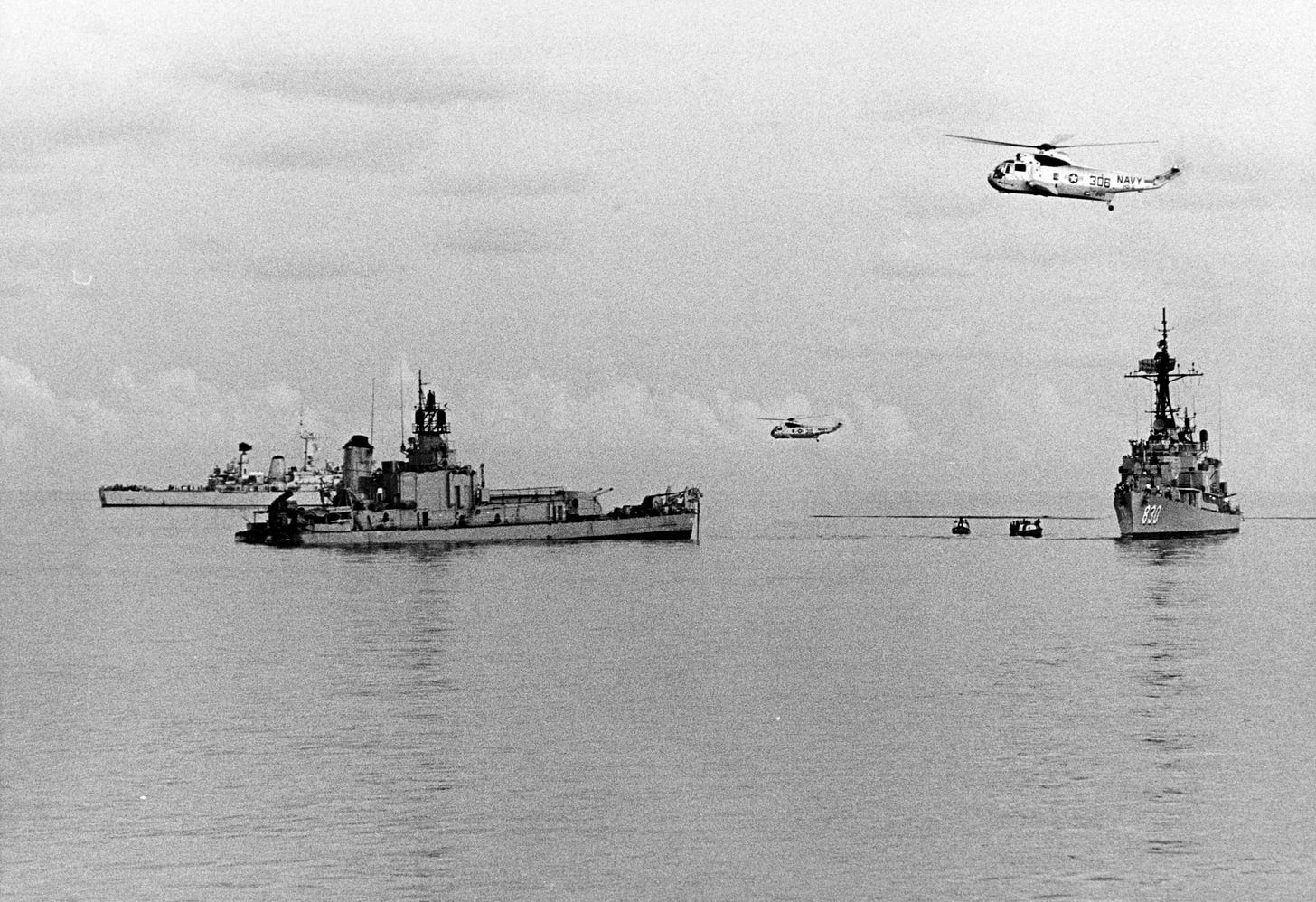TDIH: USS Frank E. Evans
She went down during the Vietnam War, yet the 74 sailors killed have not been added to the Vietnam Veterans Memorial Wall. Why?
On this day in 1969, USS Frank E. Evans accidentally collides with the Australian carrier HMAS Melbourne, tragically bringing her Vietnam War service to an end. Seventy-four sailors were killed that day, yet they were never added to the Vietnam Veterans Memorial Wall.
But why?
As it turns out, the collision occurred just outside the Department of Defense’s designated combat zone.
Some people today are working to get the “Lost 74” added to the Vietnam memorial, arguing that a mere technicality should not be used to exclude these sailors.
So what happened? And why is there a controversy?
Frank E. Evans had arrived in Vietnam in May 1969, where it participated in the war effort for about a month before leaving to retrieve more supplies. During this resupply trip, the destroyer was asked to take part in a training exercise in the South China Sea. But wasn’t Evans officially slated to return to Vietnam after the training exercise? Much of the dispute about the memorial seems to center on the answer to that question.

Certainly everyone expected that Evans would return. The destroyer had merely been restocking supplies when it got sidetracked by the training exercise.
Either way, trouble hit during the early morning hours of June 3, 1969. Evans was engaged in anti-submarine training exercises with HMAS Melbourne. At 3:00 a.m., the captain of Melbourne ordered Evans to move into a plane guard station.
The captain of Evans was not on deck when the order was given. He was asleep! He’d left two inexperienced officers in charge with instructions to wake him if there was a change in formation.
If only they had done so.
Instead, those officers were apparently confused about where Melbourne was and what they were supposed to do. They should have turned to port and circled back to take up their position. Instead, they turned to starboard, putting themselves in Melbourne’s path.
Things played out badly from there. The two ships collided, and Evans was sliced in half. The impact was so rough that it threw one of Evans’s lookouts off the American ship and onto the flight deck of the Australian carrier.
Evans’s bow sank in less than 3 minutes, killing most sailors aboard that section of the boat.
In the meantime, the Australian crew was working to save the remaining Americans. “It was all very quick,” Australian Captain John Stevenson would recall, “very chaotic, but organized as far as the Melbourne was concerned. They all knew what they were doing. The stern half of the Evans was secured to the ship, and people hopped over the edge to help survivors back onto Melbourne.”
“It was an incredible sight to behold,” one eyewitness would agree. “The back half of the destroyer was being tied to the starboard side aft of the Melbourne . . . . It was hard to believe what I was witnessing. Half a ship . . . gone!”
The Melbourne crew pulled American sailors from the water or transferred them from Evans. The search continued for 15 hours, but only 199 survivors were ultimately found. Seventy-four Americans had been killed, including three brothers from Nebraska who had asked to serve together, all aboard the same ship.
“After surviving an epic sea battle in 1945 off Okinawa, in which she had repulsed 150 kamikaze planes, shooting down 50,” one historian concludes, “the Evans ignobly went to her death through poor navigation.”
Adding insult to injury, the names of those lost still have not been added to the Vietnam Veterans Memorial Wall.
Sources can always be found on my website, here.




A really tough call. I grieve for those men and their families. However, they were not, in fact, participating in the action re Vietnam. They were, in essence, "TDY" to the training exercise far from Vietnam waters. I believe the same rule should apply, here, that applies to soldiers TDY from Vietnam (training, etc) OR, those on R&R in, say, Australia. If a soldier dies while on R&R in Australia and his name gets on the Wall, then these sailors should be added. If not, not. Regardless, thank you, Tara Ross for reminding us that the impact of the war continue - perhaps, forever.
What a tragedy and shame on our government for not recognizing the 74 sailors who died that fateful night ! The men who died that night should be on the “ Wall “ they were following orders and the fact that some defense dept bureaucrat thought a training exercise in the middle of a WAR WAS A GOOD Idea is both Wrong + Dumb !